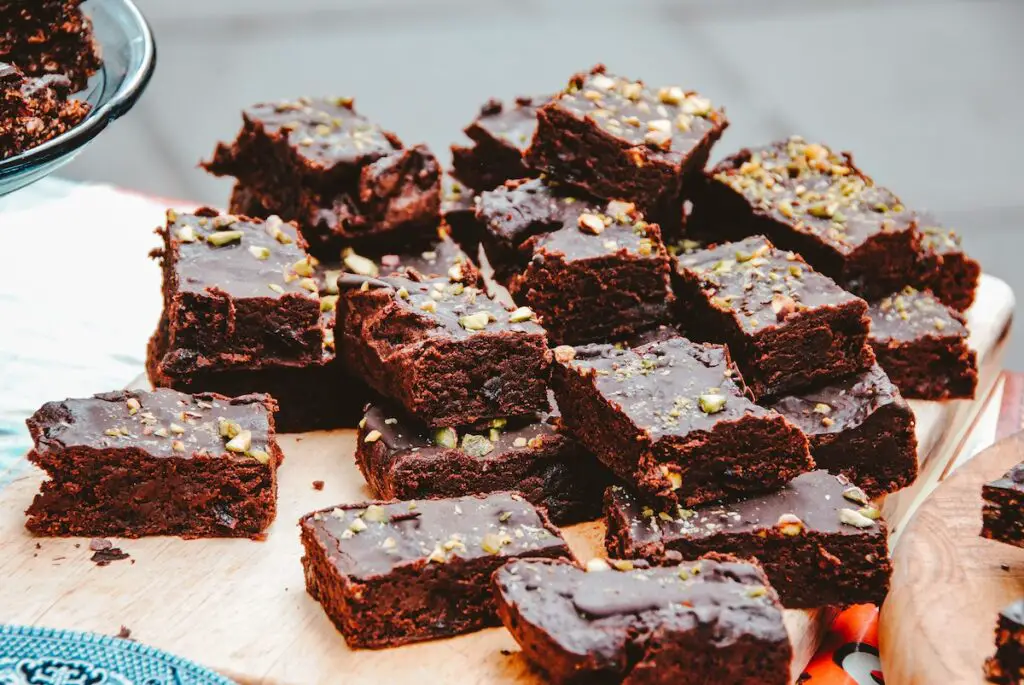Nominated-Day or Next-Day
Nominated-Day or Next-Day

Wondering why my fudge is like caramel is all about correct temperatures and textures. If the temperature is too low, the fudge will be too soft and sticky, and if it’s too high, it will turn into a hard, crumbly mess. The ideal temperature to cook fudge is between 232-234 degrees F (111-112 degrees C).
It’s not the most difficult recipe to make successfully; however, now and then, it’s possible to encounter certain difficulties.
In this article, we’ll go over making fudge and how to keep it from going goopy or turning into caramel.
Making fudge is quite simple. However, like many other sweets, its success depends heavily on precise temperatures.
When creating candy, the objective is to melt sugar crystals and regulate how they recrystallize.
This is achieved by regulating how much moisture is taken out of the sugar mixture as it is cooked. The lower the amount of moisture present the more sugar concentration as Ricardo Cuisine explains in their Successful Fudge guide.
The sugar content can be measured by analyzing temperatures that can be measured with accurate thermometers. The different sugar levels (meaning the various moisture levels) make various kinds of candy.
For fudge, it is important to get to the point of softball, 234-240 degrees F (112-116 degrees C). Therefore, when making fudge sugar, the sugar should be cooked until the temperature of 232-234 degrees F (111-112 degrees C).
After the mixture has reached the right temperature, removed it from the stove and let it cool. You'll see crystals begin to form.
When it’s cooled to around 110 to 113 degrees Fahrenheit (43-45 degrees C), stir the mixture until it becomes thicker and lighter in shade.
Pour the fudge into an oven-proof tray and leave it to cool completely at room temperature before putting in the refrigerator to set.

When something goes wrong when making fudge, The culprit is likely to be the temperature.
Chewy fudge results from the excessive moisture present in the mixture, which means the fudge was not cooked to the right temperature and could not be cooked enough to release the moisture.
However, take care not to overcook fudge because it will take away the moisture and leave you with hard, chewy candy.
Apart from the incorrect temperature, chewy fudge could result from inadequate beating. When it has cooled to 110 to 113 degrees F (43-45 degrees C), beat until it is creamy and smooth.
The process could take between 20 and 30 minutes. The mixture should begin to lose it's gloss and become more matte.
Here are some suggestions to determine your temperature accurately with a thermometer:
Most candy thermometers are equipped with hooks so place the thermometer on the sides of the pot.
Another way to test the temperature or level of the mixture is by using an old technique. Keep a bowl filled with cold water close to you.
When the mixture has been cooked to the suggested time and is almost cooked, pour a small amount of sugar syrup into the cold water.
If the sugar hardens to a soft-ball state (a soft ball of sugar that is easy to flatten with your fingertips), it is now at the proper consistency.
Incorrect beating may make the fudge chewy. It could be because you began beating the mixture too fast (while it was still hot), resulting in hard, unappealing crystals and a chewy texture.
Be sure to allow the mixture to cool completely before beating it to a sufficient length!
It’s difficult to fix caramel fudge once it’s overcooked, but you could try melting it down and cooking it to the right temperature.
Fudge can turn into caramel due to overcooking or undercooking, incorrect temperatures, or wrong ingredients.
Caramel is a candy made by heating sugar until it melts and then turns brown, while the fudge is a candy made with sugar, milk or cream, and butter, cooked to a specific temperature.
If your fudge has a texture like soft toffee, it could be due to overcooking, using too much sugar or butter, or not cooking it to the right temperature.
Leave a comment